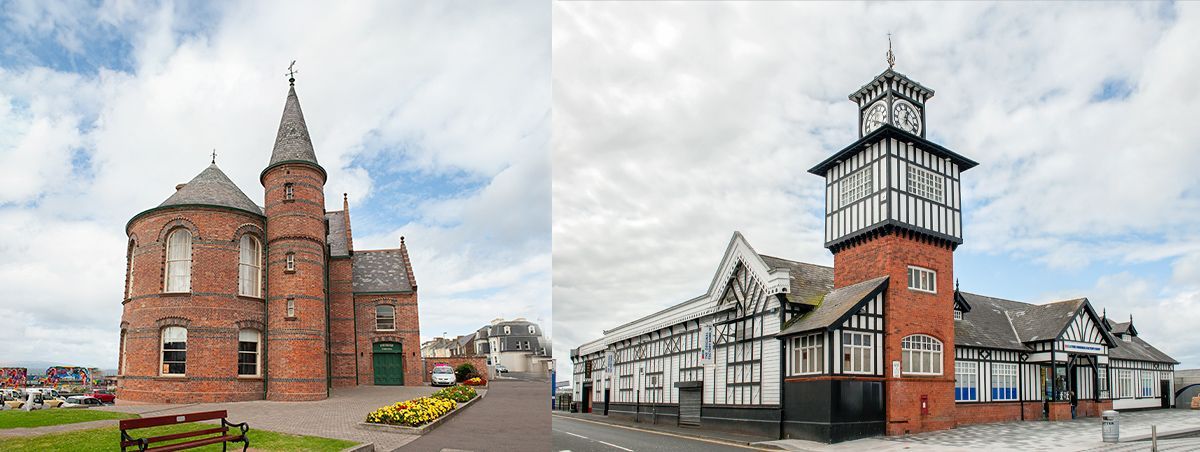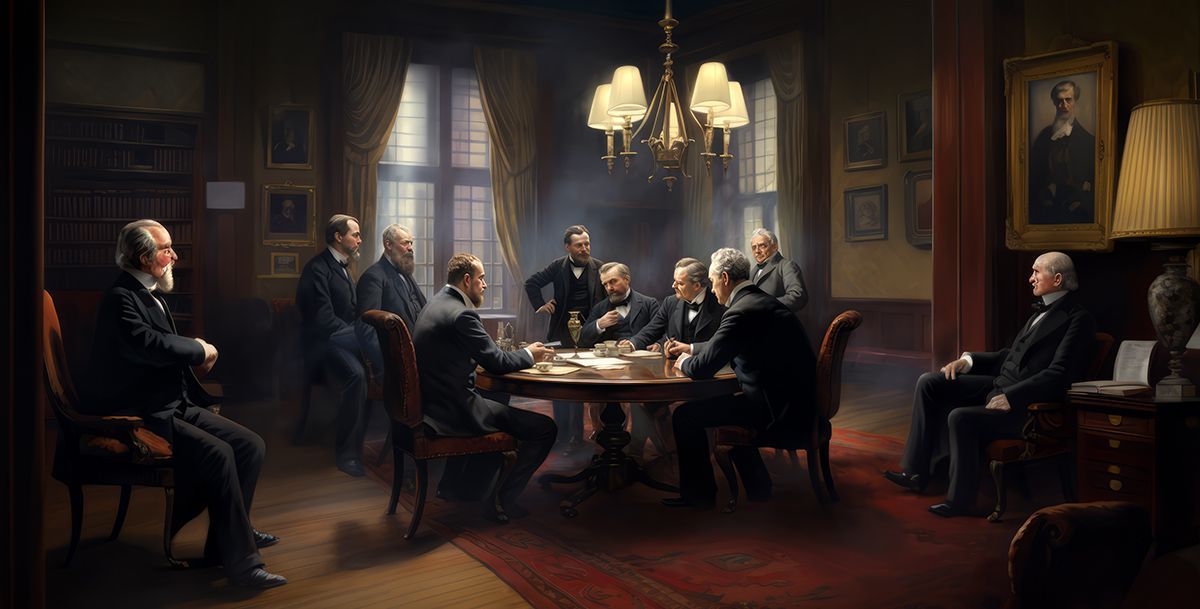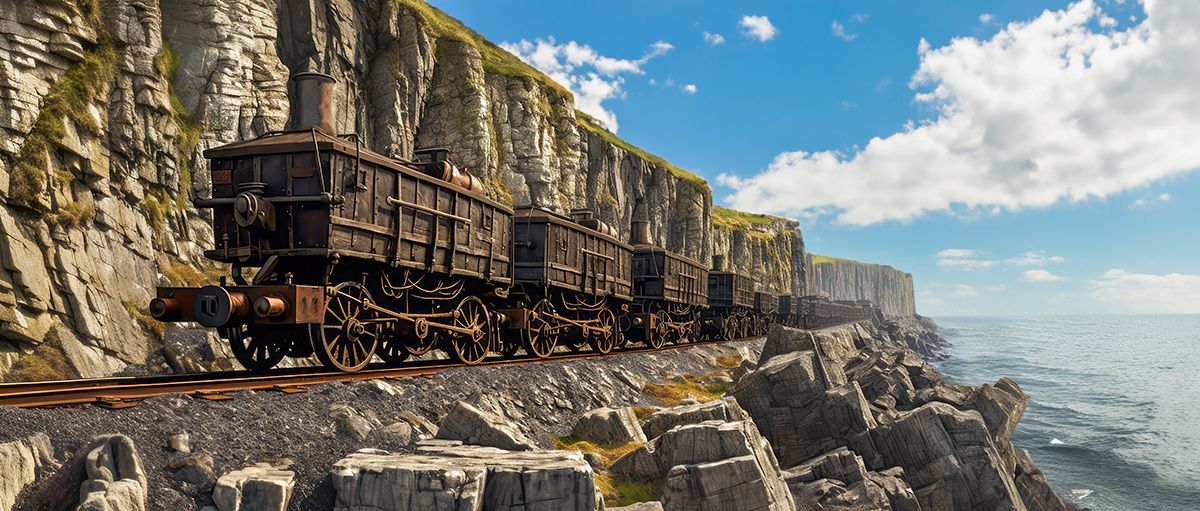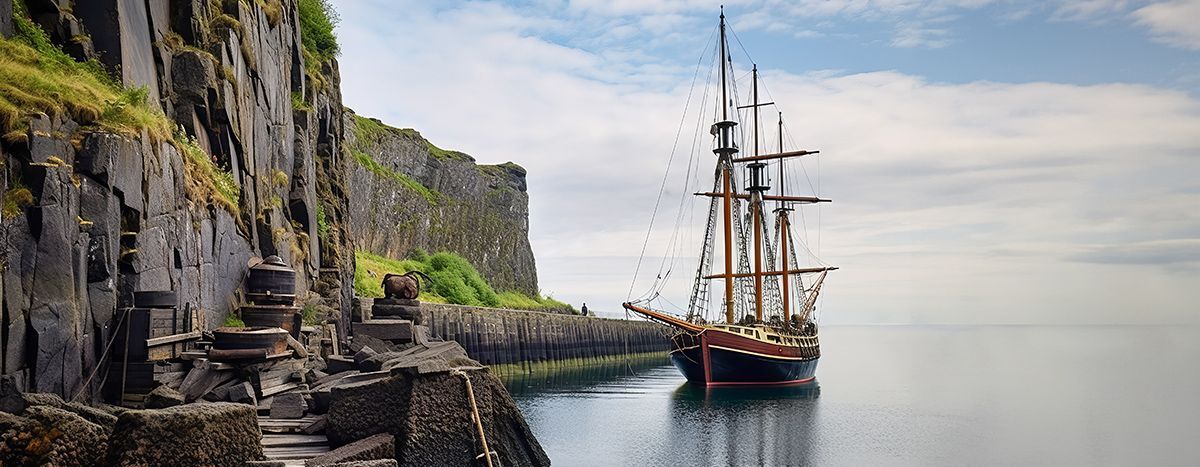Proposal for railway line from Portrush to Ballycastle

I wrote this piece in 1993 for 'Portcaman' published by the Bushmills Folklore & History Group.
The emergence of Stevenson's "Rocket" and the subsequent development and success of the steam train in the 18th century sparked a transportation revolution across Europe. The dawn of the golden age of steam reached these shores in 1834 with the inauguration of the first railway line, which ran between Dublin and Kingstown.
In 1839, the first goods and passenger line from Belfast to Lisburn was established. Soon, rail lines began to extend from the two major cities, facilitating communication, commerce, and accessibility throughout Ireland.
The opening of the Belfast to Ballymena line in 1848 marked the beginning of an extensive network of lines that would connect virtually every community in Ulster, the extension of the line from Ballymena reached Portrush in 1855.

This new mode of transport brought numerous opportunities for both business and leisure. Goods could now be easily transported from one place to another, and people could take advantage of the increasing number of scheduled rail services to various locations across Ireland. Meetings across the country were buzzing with proposals from interested parties eager to maximize the potential of this innovative form of transport and benefit their local communities
This meeting was held in Portrush Town Hall on a wet and stormy September evening in 1873. Despite the inclement weather, many interested parties traveled up to twenty miles along the shore from Ballycastle to attend the meeting. Upon arrival, they found a warm room heated by a glowing fire fueled by lignite from the mines at Ballintoy, managed by Mr. John Dickson.

The attendees that night included:- Major Hannay, J.P. - Captain Chaine - Daniel Taylor, J.P. - R.M. Douglas, J.P. - William Woodside - Robert Sharpe, MD. = James Macaw, MD. - A.T. Carson, MD. - George Given - Daniel Gailey - John Dickson - Patrick McLaighlin - Thomas Bellas - James Kinnon - William Ellis - Dr. Moore (Dungiven) - John Boyd - John Hall - Thomas McCombe - Samuel Steele - James Currey - Isaac Hunter and William Hastings.
They convened to pass resolutions proposing the establishment of a railway line from Portrush through Bushmills to Ballycastle. They also formed a committee with the intention of creating a company and seeking parliamentary approval for the necessary powers to undertake the project. An engineering survey of the proposed line had already been conducted by John Lanyon, Esq., the acting engineer/superintendent for the project.

His report indicated no significant engineering challenges in constructing the proposed line, which would follow the coast to Ballycastle. The line would be nineteen and three-quarters miles long and operate on the narrow gauge system.
It would pass through lands owned by: The Earl of Antrim - W.G. Lawrence, Esq., J.P. - Representatives of the late James Moore, Dean of Ripon - Sir Edward W. Macnaughten - Trustees of the Ballycastle Charity - Hugh Lecky, Esq., J.P. - B.M. Given, Esq., J.P. - James E. Leslie, Esq., J.P., D.L. - Alexander Fullerton, Esq. - Robert Woodside, Esq. - John McGildowney, Esq., J.P., D.L. - Sir Harry Boyd. All of whom were supportive of the proposal.
The estimated cost, including land expenses, was projected not to exceed four thousand pounds per mile. Once construction commenced, the line was expected to be completed within a year and a half. A previous survey had indicated the commercial viability of extracting iron ore, bauxite, coal, and lignite from the area. In fact, coal was already being extracted from the Ballycastle mines and shipped via sea, although this practice was weather-dependent.

All agreed that the proposed line would not only facilitate the commercial extraction of abundant mineral deposits but would also enable year-round shipping of Ballycastle coal through the more sheltered Portrush harbour. The line would allow the lignite mines at Ballintoy to reach their peak output of 50 to 100 tons per day. Mineral deposits from Portmoon, Drumnagessan, Urbalreagh, as well as limestone from Ballymagarry and Larrybane, would become easily transportable.
Local deposits of saline-free sand could also be commercially exploited through the line, along with the development of an inland trade for seaweed (manure) collected along the route. One of the line's favorable aspects was its potential to tap into the existing demands of tourism and manufacturing provided by Bushmills.

The Mcnaughten family of Dundarave also developing plans for a quay at Contham Head to export mineral extracted in Portfad and exploit other deposits.
Despite receiving strong support, the proposed line never materialized due in part to a lack of substantial financial backing and uncertainties about the potential financial returns. Throughout the 1870s, numerous proposals for railway lines were put forth. Only two of these proposals materialized locally:
- Ballycastle - Capecastle - Armoy - Stranocum - Dervock - Ballymoney line, construction of which began in 1877.
- Portrush - Giant’s Causeway Tramway, pioneered by Dr. A. Traill and his brother William Traill. Public services commenced on January 29th, 1883, with an extension to the Causeway opened in 1877.
- The plans by the Mcnaughtens for Contham Head never went further than the architectural plans.

